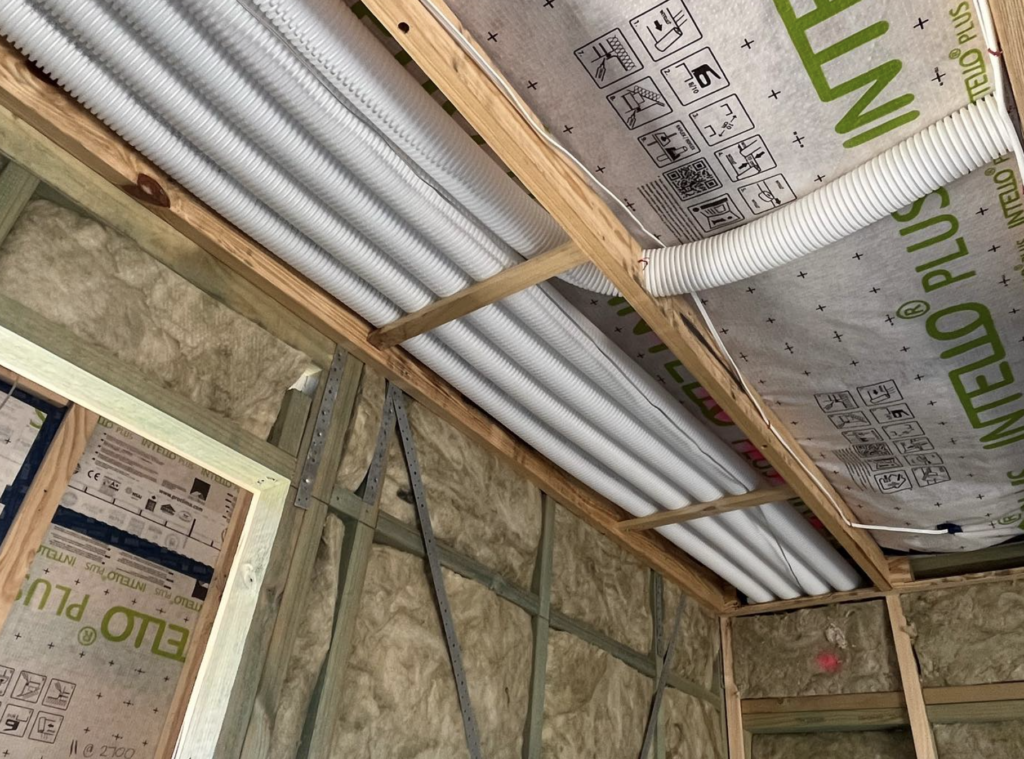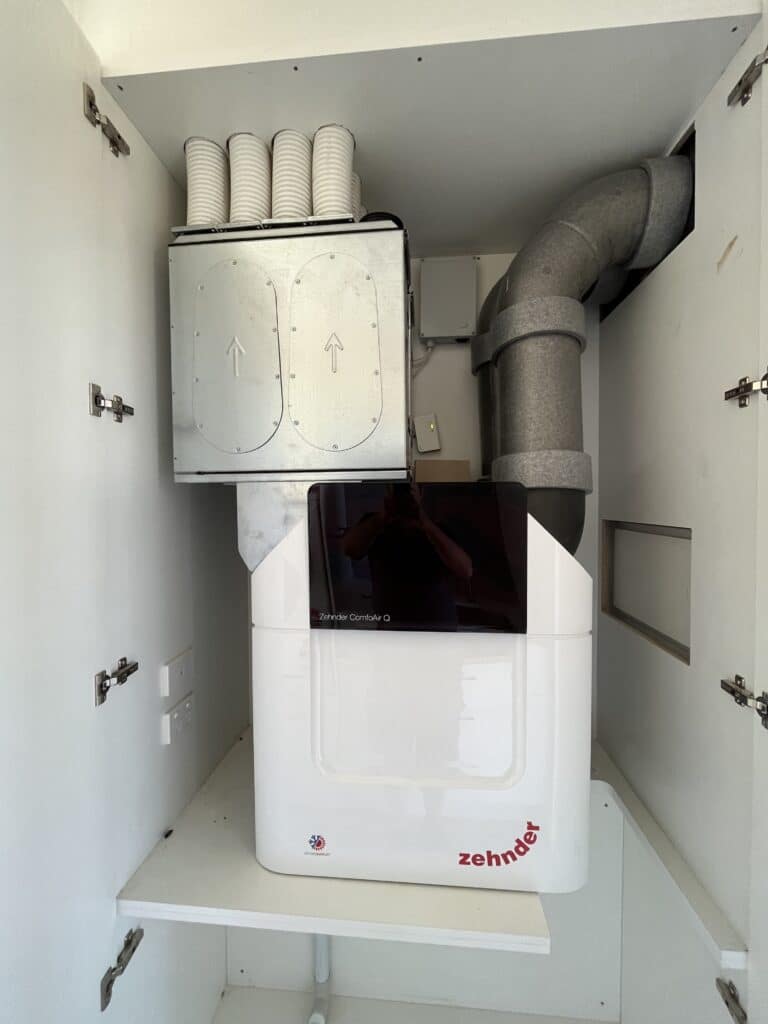If you’ve been exploring high-performance or airtight homes, you’ve probably come across the term MVHR – short for Mechanical Ventilation with Heat Recovery.
It sounds a bit technical, but the idea is simple: MVHR is about giving you fresh, clean air all year round while keeping energy bills low and your home comfortable. In this post, we’ll break down what MVHR is, how it works, and why it’s becoming a must-have in modern energy-efficient homes.
What Is MVHR?
MVHR is a whole-house ventilation system that continuously supplies fresh air and extracts stale air — and in the process, recovers heat from the outgoing air to warm the incoming air.
Think of it as your home’s lungs, but with a built-in energy-saving feature. Instead of throwing away all that warmth in winter (or coolness in summer), an MVHR unit uses a heat exchanger to transfer the energy from stale air to the incoming fresh air — without mixing the two.
How Does MVHR Work?
A typical MVHR system has:
Supply ducts delivering fresh, filtered air into living spaces like bedrooms and lounges.
Extract ducts removing stale, humid, or odorous air from kitchens, bathrooms, and laundries.
A heat exchanger in the central unit that transfers heat from the outgoing air to the incoming air in winter, and helps keep things cooler in summer.
Filters that remove dust, pollen, and pollutants from the incoming air.
The system runs quietly in the background, 24/7, providing a constant supply of high-quality indoor air.

Why Is MVHR Important in Modern Homes?
1.It Keeps the Air Fresh and Healthy
In an airtight home, natural draughts are eliminated — which is great for energy efficiency, but it means you can’t rely on “accidental” ventilation to keep the air fresh. MVHR ensures a controlled, balanced flow of clean air into your home, reducing pollutants, allergens, and moisture build-up.
2. It Can Save Energy
By recovering up to 90% of the heat from the outgoing air in winter, MVHR dramatically reduces the energy needed to heat your home. In summer, bypass modes can help keep cooler night air circulating without unnecessary heat gain.
3. It Improves Comfort
MVHR avoids cold draughts in winter and stuffy rooms in summer. The steady, balanced airflow creates an even indoor climate.
4. It Protects Your Home
By controlling humidity and removing moist air at the source, MVHR helps prevent condensation, mould, and long-term damage to your building structure.
Is MVHR the Same as Air Conditioning?
Not quite. MVHR is about ventilation and heat recovery, not heating or cooling. It works alongside your heating and cooling systems, but it’s not a replacement for them.
Is MVHR Right for Every Home?
MVHR is most effective in airtight, well-insulated homes — such as Passive House or high-performance builds — where you want precise control over air quality and heat loss. In leaky, older homes, the benefits are reduced because uncontrolled air movement reduces the system’s efficiency. Saying that even in a leaky home there will be benefits to supply clean filtered air into the home.

The Bottom Line
An MVHR system is a game-changer for airtight, energy-efficient homes. It ensures you get continuous fresh air, lower energy bills, better comfort, and a healthier living environment — all while protecting your home from moisture damage.
Find out more:
At HiPer Haus, we design, supply, and install MVHR systems that are tailored to your home’s needs. Whether you’re building new or upgrading an existing space, we can help you breathe easier while keeping energy use in check.
Read more about MVHR systems here

